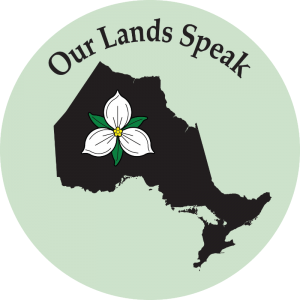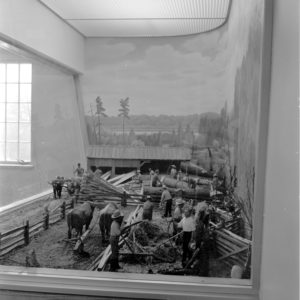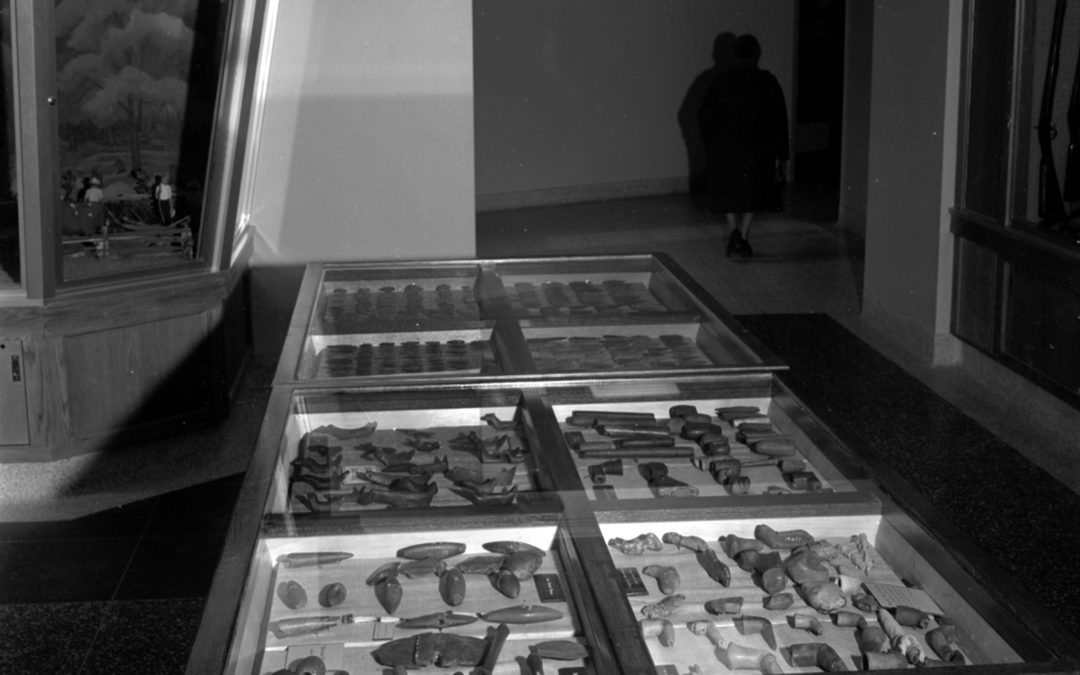In my recent blog entitled The 1975 Excavations at the Draper Site: Problem Solved, Opportunity Created, I described  my decision to remain at The University of Western Ontario and tackle the challenge of revitalizing Wilfrid Jury’s Museum of Indian Archaeology and Pioneer Life.
my decision to remain at The University of Western Ontario and tackle the challenge of revitalizing Wilfrid Jury’s Museum of Indian Archaeology and Pioneer Life.

Plate 2 Jury Pioneer Model Display Middlesex College 1961 London Free Press Archives, Courtesy of Western Archives
In 1976, the museum occupied two offices in Middlesex College. Wilfrid had a large office, about 200-square feet, while Elsie had a smaller office, about 100-square feet, both on the ground floor. Many of the artifacts were stowed in two office-sized storerooms in the attic of the college. There was a large display case in the foyer of the third floor with eight sets of drawers and a glass top (Plate 1, see feature image above). The drawers were rotated occasionally to allow the exhibit of the artifacts in lower drawers which were not normally visible. Other exhibits in the foyer of Middlesex were the two models of Pioneer Life (Plate 2) and a display of guns and swords. The much larger model of an Indigenous Village which had been created by Amos Jury was situated at the front of the large third floor lecture hall.
A part of the Jury Collection had been stored in two sizeable wooden crates in one of the barns at Fanshawe Pioneer Village. These were artifacts for which there was no provenience and were apparently stored there since they were not considered of much value. In 1974, I had obtained a laboratory in the Department of Anthropology in the new Social Science Building and had a couple of Anthropology students clean and catalogue these to ensure that their origin was documented.
In pursuing my new job, initially, Wilfrid had some issues with me. One of these was that I was a University of Toronto graduate and that Professor Emerson, another of the pioneers of Ontario archaeology, had vigorously opposed the funding that Wilfrid and Elsie had obtained for the reconstruction of Sainte Marie Among the Huron. Wilfrid had perceived me as being one of Emerson’s students. Fortunately, we finally overcame this matter when Elsie reminded Wilfrid that she too was a University of Toronto graduate and that this should not be held against me.
There was also the matter of the museum’s operating budget which in 1976 was $3,000 a year. Wilfrid’s position was that he would retain signing authority over all aspects of the museum’s budget. This was not all that reasonable since Wilfrid and Elsie spent their summers at their cottage near Penetanguishene and their winters in Jamaica. We eventually resolved this matter too, by leaving Wilfrid in control of the $3,000 annual budget which had been under his purview in prior years.
To facilitate the revitalization of the museum, responsibility for its operation was transferred from the Office of the President to the Dean of the Faculty of Social Science. The faculty provided the sum of $11,000 as a base budget for the operation of the museum, with the condition that I obtain my salary from elsewhere. This was acceptable to me, since I knew that my salary and benefits would be paid by the contract for archaeological studies at the Pickering Airport for 1976 and hopefully beyond.
This was the state of affairs at the museum at that time. I assumed the position of Executive Director in February 1976 and began the challenge of its revitalization as an archaeological research centre committed to field work, analysis, and reporting of sites in southwestern and southcentral Ontario. It was a daunting task, but one which was rewarding and productive for more than 20 years. In a future blog, I will discuss the development museum facilities and display space on the University campus as an interim step to the construction of a new museum building beside the Lawson Prehistoric Indian Village in northwest London.
Thanks, as always, for following along. I value hearing from you and do my best to respond personally by email. Be sure you’re signed up to receive my future blog posts and check us out on Facebook too. More new announcements soon.
In the meantime, I’ll be speaking on volume 2 in Our Lands Speak series at the Richmond Hill library on Sat, Oct 26 at 10:30 a.m. Join us if you can.
Sincerely,
Bill Finlayson
William D. Finlayson, Midland, Ontario
Ontario’s Leading and Senior-Most Archaeologist and Author
Founder of Our Lands Speak Book Series and Occasional Papers in Ontario Archaeology
Feature image of blog post: Plate 1 Wilfrid Jury Display of Artifacts, Middlesex College, 1961, London Free Press Archives, Courtesy of Western Archives
Note: Both photographs from London Free Press Archives at Western Archives, Western University.
All rights reserved. The use of any part of this publication reproduced, transmitted in any form or by any means, electronic, mechanical, photocopying, recording, or otherwise, or stored in a retrieval system, without the prior written consent of the author and publisher is an infringement of the copyright law. To that end, every attempt has been made to give proper acknowledgement, and access appropriate permissions for quotes. Any oversights are purely unintentional. In the unlikely event something has been missed, please accept our regret and apology, and contact us immediately so we can investigate and rectify as needed. All of the quantitative factual information is recorded in various published and unpublished sources and can be provided upon request.
